If you are looking wholesale lighting solutions, click here.
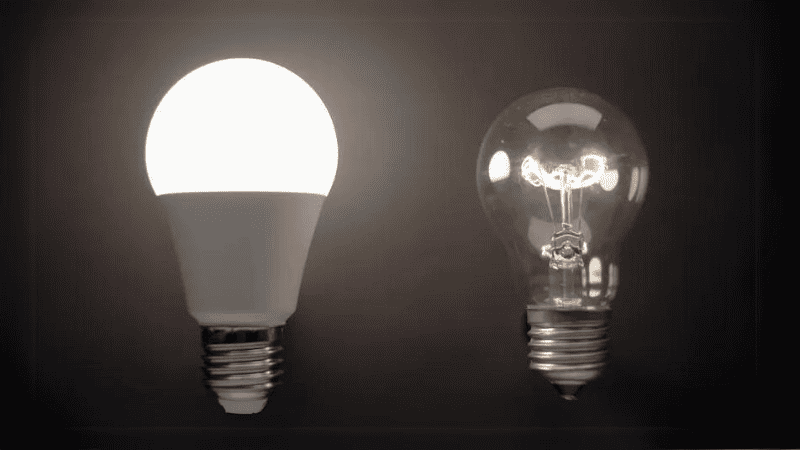
For home lighting, the ideal two options are LED bulbs and incandescent bulbs. The classic incandescent light bulbs, known for their warm, inviting glow, have been a household staple for years.
However, the modern LED bulb has changed the ecosystem of illumination. LED bulbs are distinguished for their energy-saving capabilities, requiring much less power than traditional incandescent lighting.
This blog will help you understand the main differences between LED bulbs and Incandescent bulbs. It also includes an analysis table, the pros and cons of choosing both, and their main usage.
At the end of the guide, you can make an informed decision. So, let’s get straight into it!
LED lights, also called light-emitting diodes, are a new type of light that’s really good at saving energy. They work differently than traditional bulbs that make light by getting a wire hot.
Instead, LEDs make light when electricity goes through a special material. This makes them use a lot less electricity – about 75% less than old bulbs – and they last much longer, up to 25 times more.
LEDs bulbs emit very little heat, as most of the energy they consume is used for producing light. In contrast, incandescent bulbs convert 90% of their energy into heat.
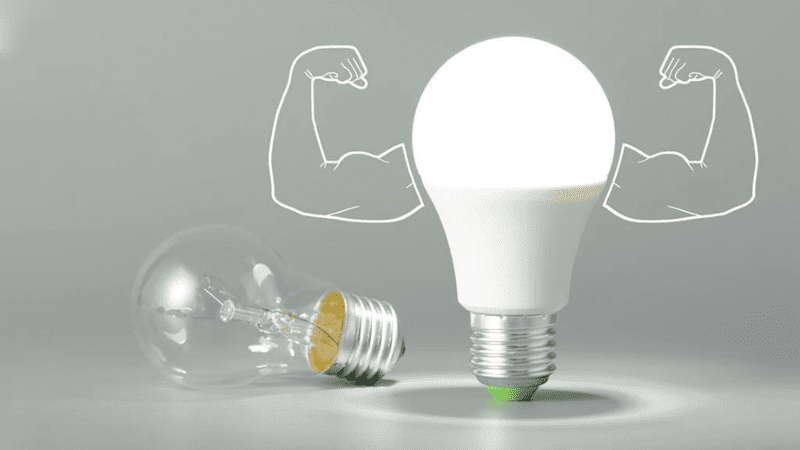
The heat sink in an LED bulb draws away the heat it produces, ensuring the light source remains cool and the heat dissipates effectively. This helps you with a longer lifespan of LED bulbs.
The incandescent light bulb is a classic and long-standing choice in lighting. This process functions on a basic concept: an electrical current flows through a slender filament, often constructed from tungsten, warming it to the point where it emits light.
This process gives the incandescent bulb its characteristic warm glow.
A significant amount of energy in an incandescent bulb generates heat rather than light, making them less efficient regarding watt usage and brightness output.
Despite this, incandescent lightbulbs remain popular due to their low upfront cost and the quality of light they emit, often used in applications where the ambiance is a priority.
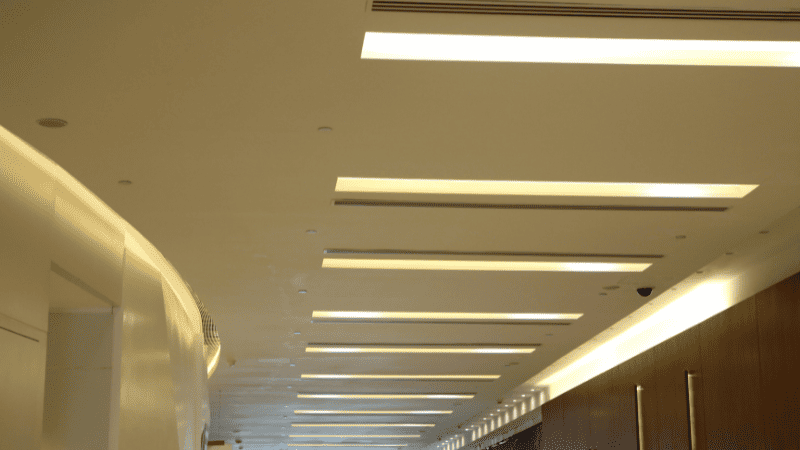
Using LED lights is a good option for outdoing old-style light bulbs. They also come in handy since they use less energy and last longer than traditional bulbs. They consume approximately 75% less electricity compared to traditional bulbs and can be useable for up to 25 times longer.
The reason they’re so energy-efficient is that they’re great at turning electricity into light, not heat. This means they don’t get as hot, making them safer and cooler.
While LED lights might cost a bit more at first compared to old bulbs, they save you money over time because they use less electricity and you don’t have to replace them as often.
Plus, they come in many different colors and brightness levels, so you can use them for all sorts of lighting needs.
Their long lifespan and the fact that they don’t use as many watts for the same amount of light make them a smart choice for homes and businesses alike.
When choosing your next light bulb, navigating the options can be tricky. Two main contenders grab the spotlight: the energy-efficient LED and the familiar incandescent.
Let’s delve into their strengths and weaknesses to illuminate the best choice for your needs.
| Aspect | LED Bulbs | Incandescent Bulbs |
| Energy Efficiency | Highly efficient, use about 90% less energy than incandescent bulbs. | Less efficient, with most energy lost as heat. |
| Lifespan | Long-lasting, between 10,000 to 50,000 hours. | Shorter lifespan, averaging around 1,000 hours. |
| Heat Emission | Emit minimal heat, reducing fire risks. | Emit more heat, which can be a safety concern. |
| Cost | Higher initial cost but save money in the long run. | Lower initial cost but less cost-effective over time. |
| Light Quality | Offer a range of color temperatures and brightness levels. | Provide excellent color rendering with a warm glow. |
| Environmental Impact | Eco-friendly, do not contain harmful chemicals. | Less eco-friendly due to higher energy use and replacements. |
| Compatibility | Some may not be compatible with dimmer switches. | Generally compatible with dimmer switches. |
| Blue Light Emission | Emit more blue light, which can affect sleep patterns. | Emit less blue light, less likely to disrupt sleep. |
The above chart clearly outlines the key distinctions between LED and incandescent light bulbs, aiding in the decision-making process to select the most appropriate option for your unique lighting needs.
LED Bulbs Pros:
LED Bulbs Cons:
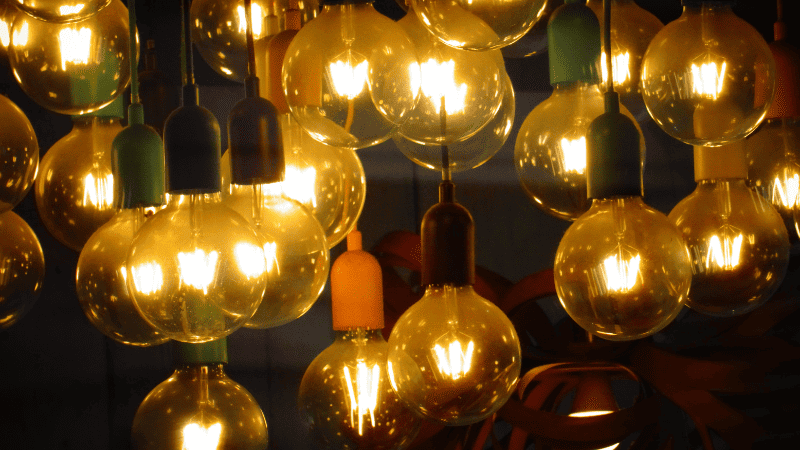
Incandescent Bulbs Pros:
Incandescent Bulbs Cons:
While LED bulbs stand out for their efficiency and longevity, they come with a higher price tag and some issues like blue light emission. Incandescent bulbs are budget-friendly and offer warm lighting but fall behind in energy efficiency and lifespan.
The following table will separately introduce the applications of LED lights and incandescent lights in different areas.
| Application Area | LED Bulbs | Incandescent Bulbs |
| Home and Office Lighting | Ideal for general lighting due to energy efficiency and long lifespan. | Commonly used for their warm glow and excellent color rendering. |
| Directional Lighting | Perfect for task lighting, under-cabinet lighting, and recessed downlights. | Often used in decorative and accent lighting to create a cozy atmosphere. |
| Outdoor Lighting | Used in street lights, parking garage lighting, and walkway lighting. | Suitable for outdoor and emergency lighting where immediate brightness is needed. |
| Industrial Uses | Suitable for refrigerated case lighting, modular lighting, and other industrial applications. | Less common in industrial settings due to lower energy efficiency. |
| Decorative Lighting | Used in decorative fixtures for their variety in color temperatures and brightness levels. | Preferred in settings where ambiance is a priority. |
| Specialty Applications | Employed in electronic devices, signal lights, and automotive lighting. | Used in heat lamps for incubators, lava lamps, and toys like the Easy-Bake Oven. |
| Portable Lighting | Increasingly used in portable applications due to advancements in LED technology. | Common in portable lighting like table lamps, car headlamps, and flashlights. |
These steps ensure you get the most out of your LED lighting in terms of brightness, energy savings, and longevity.
If you’re moving to LED bulbs, it is important to understand lumens. It is the real measurement of brightness provided by a light bulb. Unlike incandescent bulbs, where wattage is often associated with brightness, in LEDs, lumens are the accurate indicator.
For instance, an LED bulb with a similar brightness to a 60-watt incandescent bulb would typically use only 10 to 15 watts of energy. Therefore, check the lumens to know the exact desired brightness level.
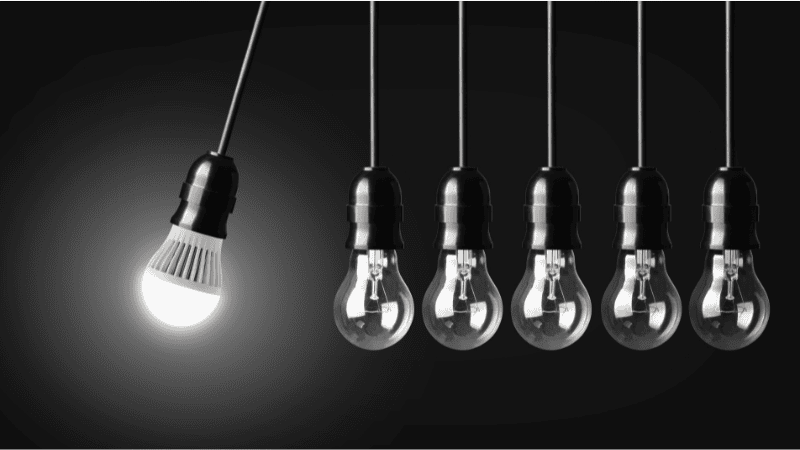
Opting for EnergyStar-certified LED bulbs can be a wise decision. These bulbs meet strict efficiency, quality, and lifetime criteria set by the US Environmental Protection Agency or the US Department of Energy.
EnergyStar-certified lighting uses less energy compared to incandescent lights. As a result, it helps you save on electric bills.
They also tend to have a longer lifespan, reducing the need to replace your bulbs frequently. Choosing these products saves money in the long run and contributes to environmental conservation.
When switching to LED bulbs, forget the old wattage-based thinking associated with incandescent light bulbs. Unlike incandescents, where wattage is linked to brightness, LED wattage is about energy use, not light output. LED brightness is measured in lumens.
For instance, a 60-watt incandescent bulb equals about 800 lumens. To match the brightness of your old incandescent bulbs, look for LED bulbs with 800-1100 lumens for smaller rooms and around 2800 lumens for larger areas or garages.

Start replacing bulbs in areas you use most, like outdoor spaces, family rooms, and kitchens. By focusing on these high-usage areas first, you’ll see quicker returns on your investment.
LEDs are always best over time since they consume less energy and offer longer lifespan. So replacing the most frequently LEDs maximizes these benefits.
In this analysis of LED bulbs and incandescent light bulbs, it’s way clear that each option has its unique strengths and usage. LED lighting stands out for its flexibility and energy efficiency, long-lasting, and versatility in color temperatures and customization.
Conversely, incandescent bulbs may have a continued place in settings where the warmth of the light and initial costs are significant factors. However, their higher energy consumption and shorter lifespan, mean they are less efficient and cost-effective over time.
Are you ready to revolutionize the way you light up your space? Make the switch to LED bulbs now and experience not just a change in lighting, but a transformation in your environment and energy consumption.
With Risun‘s cutting-edge LED solutions, you’re not just upgrading your bulbs, you’re stepping into a brighter, more sustainable, and cost-effective future.
Visit Risun’s One-Stop Lighting Supply Service to find the perfect LED solutions tailored to your needs.
Join the myriad of satisfied customers who have switched to Risun’s LED lighting. It’s more than just lighting; it’s about creating a sustainable and efficient environment. Contact us today!
Comprehensive Lighting Solutions for MRO Wholesalers and Professionals
send your inquiry
Hi, I'm the author of this post, and I have been in this field for more than 15 years. If you want to wholesale lighting fixtures or lighting related product, feel free to ask me any questions.
Learn More >>Download our catalog to view all of our lighting products.
Ready to get started ?
Send Your InquiryOur team will get back to you promptly

please
download
Get notified about new products
Our team will get back to you promptly!
Add your first comment to this post